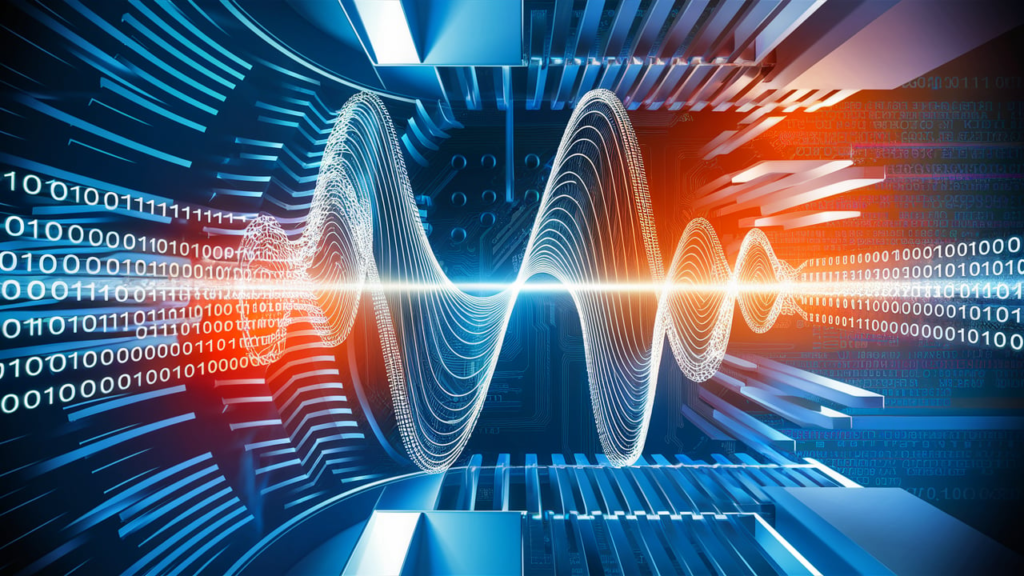Digital Signal Processing (DSP) forms the backbone of modern digital communications, audio processing, image processing, and countless other applications. At its core, DSP relies heavily on binary representation and manipulation of signals. In this comprehensive guide, we’ll explore the fundamental role of binary in DSP and understand how it enables the digital world we live in today.
Introduction to Digital Signal Processing
Digital Signal Processing involves the manipulation of signals that have been converted from analog to digital form. These signals could be anything from audio waves to radio frequencies, from image pixels to sensor data. The journey from analog to digital, and the subsequent processing, heavily relies on binary representation.
The Analog-to-Digital Conversion Process
Before any digital processing can occur, analog signals must be converted to binary form through a process called Analog-to-Digital Conversion (ADC). This process involves three key steps:
- Sampling: Converting a continuous-time signal into a discrete-time signal
- Quantization: Assigning discrete amplitude values to the samples
- Encoding: Converting these discrete values into binary numbers
For accurate conversion of analog signals to binary format, you can use our Decimal to Binary Converter.
Binary Representation in DSP Systems
Sample Resolution
The resolution of a digital signal is determined by the number of bits used to represent each sample. For example:
- 8-bit resolution: 256 possible values (2^8)
- 16-bit resolution: 65,536 possible values (2^16)
- 24-bit resolution: 16,777,216 possible values (2^24)
To convert between different numerical representations, our tools can help:
Binary Arithmetic in DSP Operations
DSP systems perform various operations on binary numbers, including:
- Addition and Subtraction
- Multiplication and Division
- Shifting Operations
- Logical Operations
These operations form the basis of various DSP algorithms:
- Digital Filters
- Fast Fourier Transforms (FFT)
- Convolution
- Correlation
Digital Filtering and Binary Operations
Digital filters are fundamental DSP operations that process signals in binary form. Two main types of digital filters are:
- FIR (Finite Impulse Response) Filters
- IIR (Infinite Impulse Response) Filters
Both types rely heavily on binary arithmetic for their operations. For complex signal processing applications, efficient binary calculations are crucial.
Binary in Signal Encoding and Transmission
When transmitting digital signals, binary data must be encoded properly. Common encoding schemes include:
- ASCII Encoding
- Unicode
- Various Error-Correction Codes
For encoding and decoding, these tools can be invaluable:
- ASCII to Binary Converter
- Binary to ASCII Converter
- Text to Binary Converter
- Binary to Text Converter
Applications in Modern Technology
Audio Processing
- Digital Audio Workstations (DAWs)
- Audio Compression Algorithms
- Sound Effect Processing
Image Processing
- Digital Image Filters
- Image Compression
- Pattern Recognition
Communication Systems
- Digital Modulation
- Error Detection and Correction
- Data Compression
Advantages of Binary in DSP
- Noise Immunity
- Digital signals are more resistant to noise
- Error detection and correction is possible
- Maintains signal integrity over long distances
- Processing Flexibility
- Easy to modify and manipulate signals
- Complex operations can be performed accurately
- Signals can be stored indefinitely without degradation
- Cost Effectiveness
- Digital components are generally cheaper than analog
- Easier to manufacture and replicate
- More energy efficient
Challenges and Considerations
- Quantization Error
- Limited resolution in amplitude values
- Trade-off between accuracy and data size
- Sampling Rate Limitations
- Nyquist-Shannon sampling theorem constraints
- Aliasing effects
- Processing Delay
- Time required for A/D and D/A conversion
- Computational overhead
Future Trends in DSP
- Machine Learning Integration
- AI-powered signal processing
- Adaptive filtering systems
- Smart noise reduction
- Quantum Computing Applications
- Quantum algorithms for signal processing
- Enhanced processing capabilities
- New computational paradigms
- Edge Computing
- Distributed DSP systems
- Real-time processing requirements
- Energy-efficient implementations
Conclusion
Binary representation and operations form the foundation of modern Digital Signal Processing. Understanding this relationship is crucial for anyone working in signal processing, communications, or related fields. As technology continues to advance, the role of binary in DSP remains fundamental, even as new processing paradigms emerge.
Additional Resources
For practical applications and conversions, explore our suite of binary conversion tools:
- Decimal to Binary Converter
- Binary to Decimal Converter
- ASCII to Binary Converter
- Binary to ASCII Converter
- HEX to Binary Converter
- Binary to HEX Converter
- Text to Binary Converter
- Binary to Text Converter
These tools can help you better understand and work with binary representations in DSP applications.






